Overview
Straddling the country in between its two bigger neighbours Thailand and Vietnam,
Savannakhet is a bustling trade hub boasting the largest population out of any Laotian Province, with a whole 15% of the country residing here. The majority of its population are Lowland Lao, but also contains Tai Dam and Mon Khmer minorities, as well as people of Vietnamese and Chinese descent.
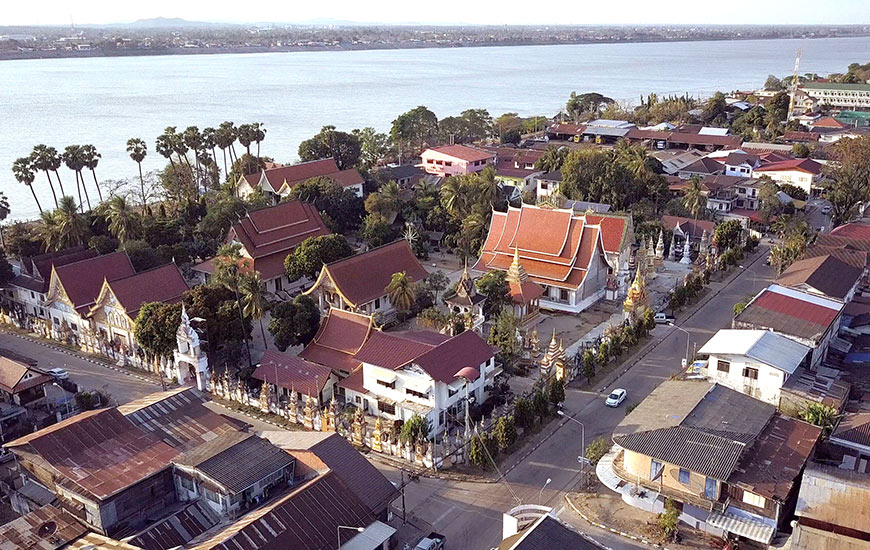
A birds’ eye view of Savannakhet Town.
Like the rest of Central Laos, the towns don’t have a lot in the form of attractions, but it’s the surrounding natural splendour that pulls travellers to this part of Laos. Three National Park Areas grace the province, in addition to the famous Ho Chi Minh trail, the primary supply route used by the Northern Vietnamese and Vietcong during the Indochina Wars.
See and Do
With its
historic quarter full of early 1900’s architecture, Savannakhet town feels like a mix of Laos’ past and present. While the myriad of French villas are sadly dilapidated and begging for a renovation, they still provide a fascinating atmosphere as you explore the streets of the town. Much of the appeal in Savannakhet is exactly this, a lazy day wandering the quiet streets.
For those interested in dinosaurs, the
Musee Des Dinosaures displays three 200-million year old dinosaur remains uncovered in the 1930’s.
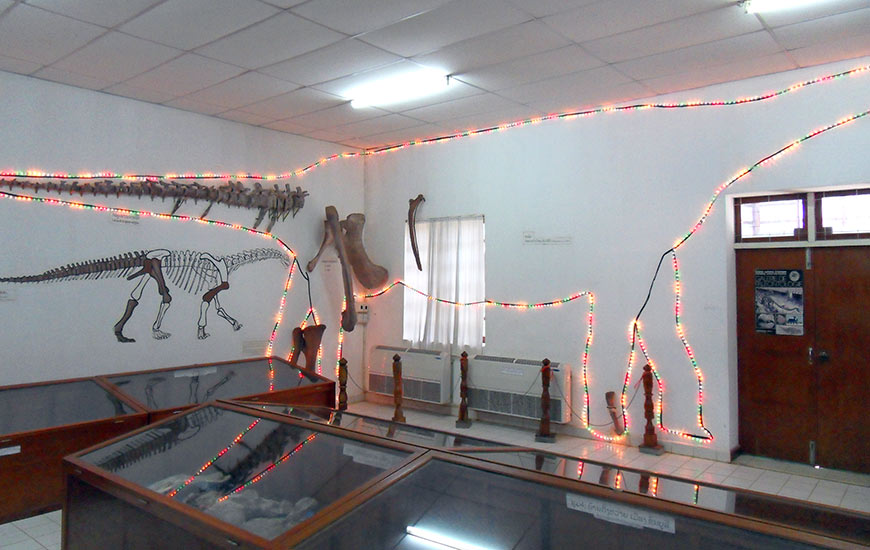
Musee Des Dinosaures is popular with kids especially.
Like all towns in Laos, there are also some monasteries of note. First is
Wat Sainyaphum, the oldest monastery in Southern Laos featuring a serene garden of centuries old trees, as well as a workshop producing golden Buddha statues. There is also
Wat Rattanalangsi, which stands out due to its glazed glass windows, a rare sight in a Laotian Wat.
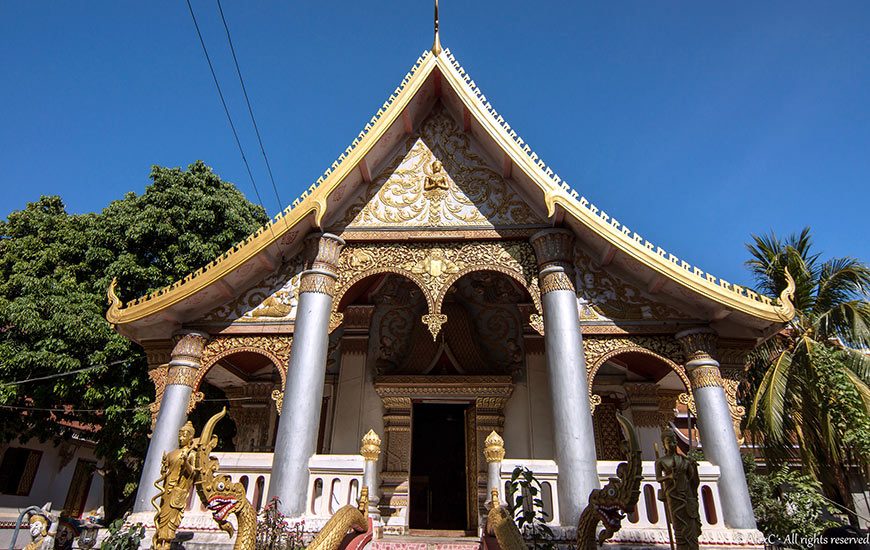
Wat Sainyaphum is Southern Laos’ oldest monastery.
Finally, there is the
Savannakhet Provincial Museum, where the country’s history and on-going problems with unexploded ordnances is laid out in sordid detail. Expect a sombre time if you choose to visit this museum, but it nonetheless provides valuable context for your stay.
The highlight in the province is easily the
Dong Phu Vieng National Park Area. Covered in dense woodlands and bamboo forests, the park is inhabited by a large amount of endangered species, and sightings of silver langurs, leaf monkeys and hornbills are common. An excellent way of seeing the park is a three day trek, which includes a stay in one of the Katang villages and a boat trip along the river.
Nearby
Phu Xang Hae National Park Area is also a spectacular place, it too being filled to the brim with wildlife. Unfortunately it can be particularly difficult to get to, as the roads are in terrible condition and the five-day trekking tour is no longer being organized.
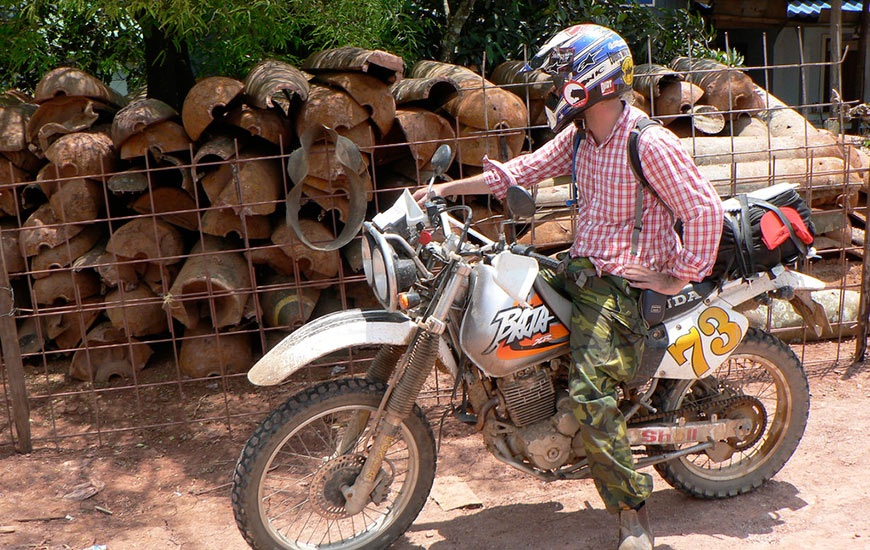
Remnants of the war can be seen at the War Museum in Sepon.
As you start to near the Vietnamese border, you will reach
Sepon (Xepon). The town itself is entirely forgettable, like many in this part of Laos, apart from its
War Museum. In the Museum, anything left over from military activity along the nearby Ho Chi Minh Trail has been gathered up and put on display.
Outside of town lies a giant monument,
Muang Phin, built in socialist style featuring Pathet Lao and North Vietnamese soldiers waving an AK-47 and the Laotian flag. The monument symbolizes cooperation between the Laotian and Vietnamese peoples during the devastating Indochina wars.
The real reason to venture this far east however, is the infamous
Ho Chi Minh Trail. The most accessible parts of the trail are the
Ban Dong and
Pa-Am villages, where some tanks and missile platforms are on display. To see the rest of the trail, a great option are the various all-inclusive motorbike treks that takes you along a good stretch of the trail, while being regaled with stories and historical context by an English speaking tour guide.
Culture & Arts
15 kilometres from Savannakhet lays
Dong Natad, a lush evergreen forest that is one of the many protected areas in the province. Deep in the forest, you can find two villages that have been peacefully coexisting with the forest and its wildlife for centuries. While treks in the forest can be done solo, a guide is required for visiting the villages, and tours involving staying at local houses can be booked in Savannakhet. While the forest is beautiful, this experience really lets you get up and close with local life in the forest, and is a fantastic way to experience their culture.
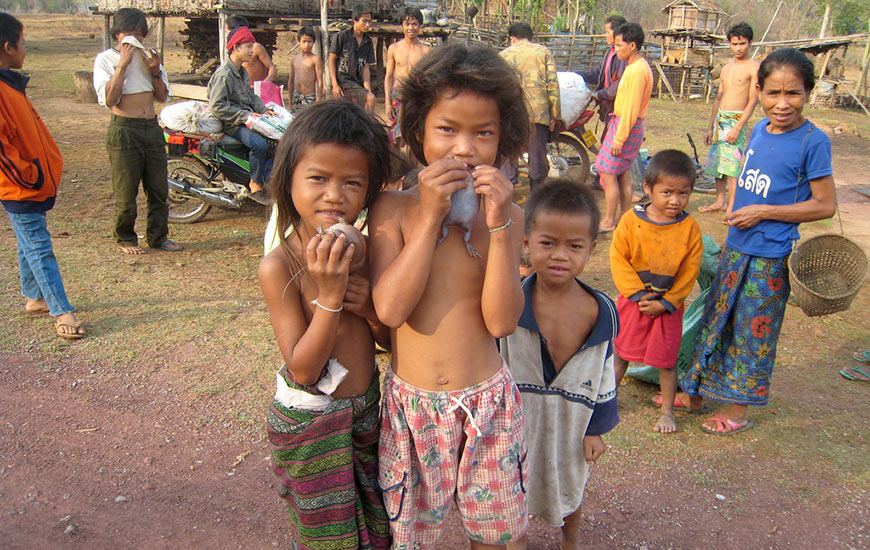
Katang children in Dong Phu Vieng NPA.
For another bizarre cultural village-experience, book a tour to one of the
Katang villages residing in Dong Phu Vieng NPA. The people here believe strongly in “house spirits” and have developed certain taboos that are intended to avoid disturbing them. Due to these sometimes restrictive taboos, you can only visit on a scheduled tour, but a visit and overnight stay here is a truly fascinating glimpse of an unusual culture not found anywhere else.
Food and Drink
The nightly
Food Market at Savannakhet Plaza is perhaps the best way to imbibe in Laotian street food anywhere in the country. Sporting more than 20 stalls, you can find anything Laotian here, from barbeque skewers to noodle soups to dim-sum and sushi.

Khao Piak Sen, a traditional local dish.
A popular local speciality is Khao Piak Sen, consisting of thick noodles in broth, topped with delicious deep fried pork belly or chicken. While perhaps not the healthiest meal, it certainly is rich and delicious!
Festivals and Events
The main festival in the province is held at the
Ing Hang Stupa. Named for when the Buddha supposedly rested here under a Hang tree when he was weary of his travels, it is also said to contain one of the Buddha’s bones. The festival is usually held in December, and people from all over Laos and even Thailand come to pay their respects by making offerings of “Khan Markbeng”, small green tower-like offerings made from banana leaves and flowers.
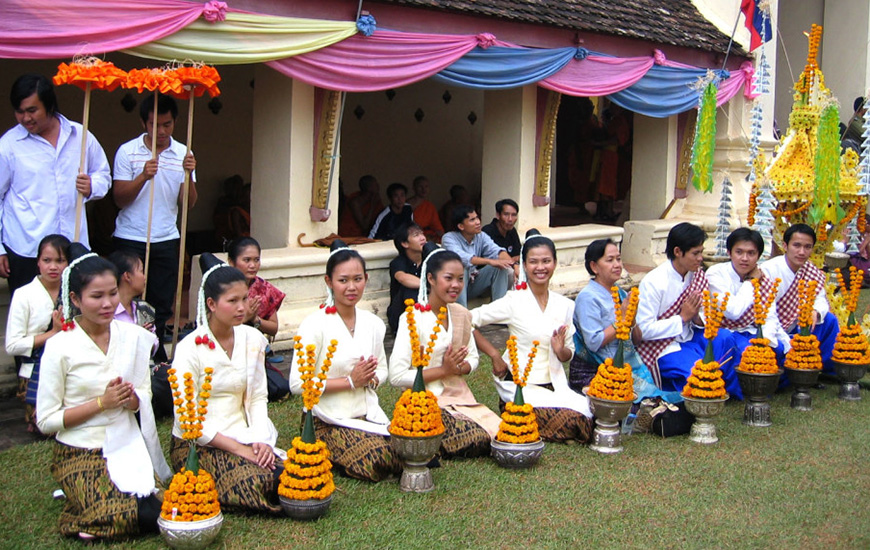
Locals celebrating Khan Markbeng.
Revellers also approach the local nuns to ask for blessings, which are given by tying small cotton strings to their wrists. Locals from the nearby area also bring a myriad of forest products to sell at the market.